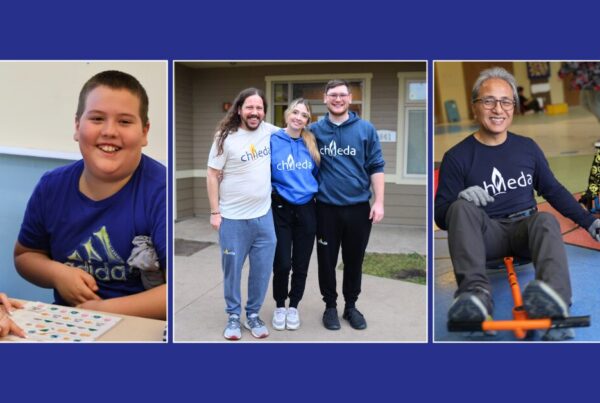The Role of Music Therapy in Autism Care
Chelsea Steen, Music Therapist
Introduction
Imagine living in a world where your thoughts constantly race from one idea to the next, and your body moves in repetitive patterns around the room without pause. This is often the reality for individuals with autism spectrum disorder (ASD). However, music therapy can offer a unique and non-invasive way to possibly help bring more expression, focus, and connection into their lives. In the following article, Chelsea Steen, Music Therapist at Chileda Shine Community Services describes the merits of music therapy and why it is valued in autism care.
Expressing Emotions Through Songs
For many individuals with autism spectrum disorder (ASD), expressing emotions through words can be a significant challenge. Yet, the simple act of listening to a song can unlock emotional expression in powerful ways. Music often gives voice to feelings—such as sadness, anger, or pain—that may otherwise remain unspoken. When others hear the same song and resonate with its emotional tone, it can help validate these feelings, thereby fostering a deeper sense of understanding and connection between and among individuals.
Now, imagine another scenario: a child with ASD is encouraged to sit at the piano. As they begin to play, their mind becomes fully absorbed in the music. They carefully match the notes on the sheet to the keys beneath their fingers, recognizing the beloved melody. A wide smile slowly erupts across their face. This moment of deep focus and pure joy is a powerful testament to the transformative potential of music therapy.
Communicating Needs Through Music
For a teenager with limited verbal communication skills, singing can sometimes be more natural than speaking. Music has the unique ability to engage the language centers of the brain, enabling him to verbally express specific needs. As his music therapist sings a song designed to reinforce certain behaviors, the melody and lyrics begin to resonate with him. Soon, he joins in, singing, “I want water, please.” This breakthrough in communication brings him both relief and a newfound sense of independence.
The Role of Music Therapy
Each of the above scenarios highlight just a few ways in which music therapy can support individuals with ASD. Music therapy involves creating music with the student to target specific non-musical skill areas while making the process enjoyable. Students sometimes maybe more engaged in music therapy because they can choose their preferred music genres and styles. This creativity and choice can make the sessions more enjoyable, leading to desired skills development. Key areas of focus include:
- Communication: Enhancing verbal and non-verbal communication skills.
- Social Skills: Improving interactions and relationships with others.
- Sensory Integration: Helping individuals process and respond to sensory information.
- Emotion Regulation: Assisting in managing and expressing emotions effectively.
Chileda Shine’s Personalized Approach to Music Therapy:
At Chileda Shine, our person-centered music therapy sessions are thoughtfully designed to engage individuals with autism in one-on-one settings tailored to their unique strengths and needs. These sessions may include singing with the therapist, playing instruments, listening to music, or even composing original songs. Our music therapists carefully observe each student’s responses and adapt the musical experience to support emotional regulation, communication, and personal growth. Chileda Shine’s individualized methods strive to be both effective and deeply enjoyable.
Music for Everyone
While music therapists have specialized training, everyone can use music to support their needs. During stressful times, listening to a relaxing song with focused attention can help. When feeling angry, drumming along to an intense song can be a great outlet. If expressing emotions is difficult, finding lyrics that resonate with your situation can help communicate your feelings to others.
Conclusion
As Dr. Kenneth Bruscia eloquently stated, “Songs express who we are and how we feel, they bring us closer to others, they keep us company when we are alone. They bear witness to our lives.” Therefore, music therapy offers the capacity to provide expression, focus and connection to individuals with ASD, helping them navigate their world with greater ease and joy.
References:
Bruscia, K. E. (1998). The dynamics of music psychotherapy. Barcelona Publishers.
Chelsea Steen completed a music therapy degree from Wartburg College and has received additional training in Neurologic Music Therapy (NMT) and Dialectical Behavior Therapy (DBT). Since 2012, Chelsea has worked at Chileda, first as direct care staff, then as a residential music therapist, and currently as one of the music therapists in the Chileda Shine program.
*The information provided on this blog is for general informational purposes only and does not constitute medical or professional advice. Chileda, Inc. strives for accuracy but is not responsible for errors or omissions. Chileda Inc. disclaims any liability for any losses or damages arising from the use of this blog site.



